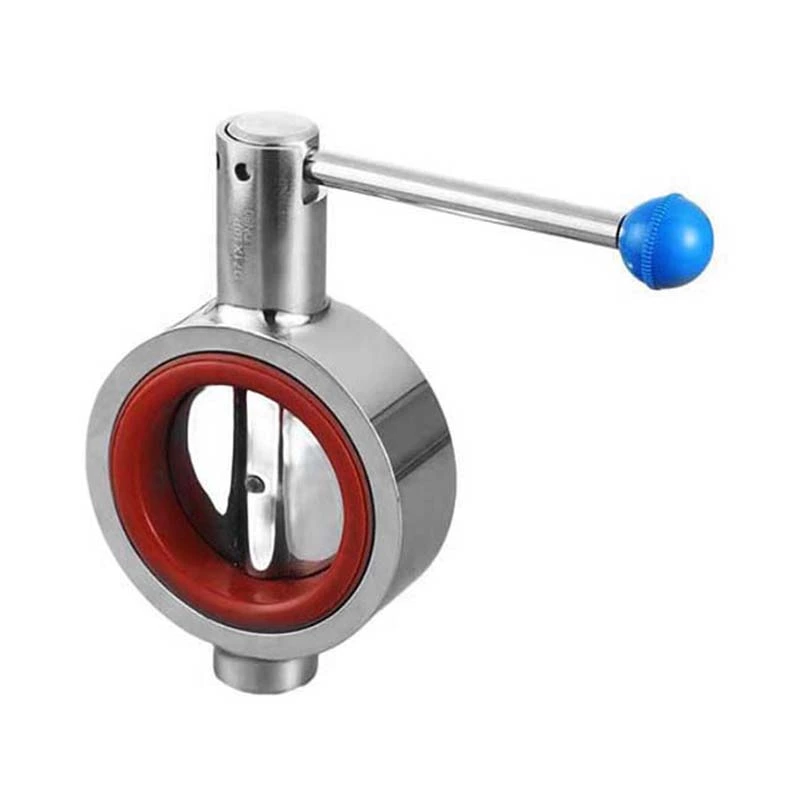How To Operate And Maintain The Pneumatic Butterfly Valve To Effectively Extend The Service Life
How to operate and maintain to effectively extend the service life of Sanitary Butterfly Valve
Pneumatic butterfly valves play an important role in our daily life and production, and are widely used in drainage and gas pipelines in industries such as petroleum, chemical industry, jewelry, natural gas, electricity, textile, papermaking, etc. to regulate flow and intercept medium.
The working principle of pneumatic butterfly valve is to use a circular butterfly plate that rotates with the valve to open and close. The pneumatic valve that enables the action is mainly used as a shut-off valve, and can also be designed to have the function of regulation or segment valve and regulation. The use of butterfly valves on low-pressure large and medium-caliber pipelines is increasing. The butterfly valve has a simple structure, small size, light weight, and is composed of only a few parts. Moreover, it can be quickly opened and closed by rotating 90°, which is simple to operate. At the same time, the electric valve has good fluid control characteristics. When the butterfly valve is in the most open position, the thickness of the butterfly plate is the single resistance when the medium flows through the valve body. Therefore, the pressure drop generated by the valve is very small, so it has good flow control characteristics. Butterfly valves have two sealing types: elastic seal and metal seal. Elastic sealing valve, the sealing ring can be embedded in the valve body or attached to the periphery of the butterfly plate.
Pneumatic butterfly valve is composed of pneumatic actuator and butterfly valve. Butterfly valve is a pneumatic valve that uses a circular butterfly plate that rotates with the valve stem to open and close to realize the activation action. It is mainly used as a shut-off valve, and can also be designed to have the function of regulation or section valve and regulation. At present, butterfly valves are increasingly used in low-pressure large and medium-caliber pipelines. Pneumatic butterfly valves are mainly classified into: stainless steel pneumatic butterfly valves, hard-sealed pneumatic butterfly valves, soft-sealed pneumatic butterfly valves, and carbon steel pneumatic butterfly valves. The main advantages of pneumatic butterfly valves: simple structure, small size, light weight, and low cost. This feature is particularly significant for pneumatic butterfly valves. They are installed in high-altitude dark passages and are easy to operate through a two-position five-way solenoid valve. The flow medium can also be adjusted.
Pneumatic butterfly valves have important applications in our daily lives. How to maintain pneumatic butterfly valves during use has a longer service life.
Correct use of pneumatic butterfly valve:
1. When using pneumatic butterfly valve, it can only be fully opened or fully closed. It is not allowed to be used to adjust the flow rate to avoid erosion of the sealing surface and accelerated wear. There is a reverse sealing device in the gate valve and the upper threaded stop valve. The handwheel is turned to the upper position and tightened to prevent the medium from leaking from the packing.
2. When opening and closing the pneumatic butterfly valve, the handwheel should be used. Do not use levers or other tools to avoid damaging the valve parts. The handwheel rotates clockwise to close, and vice versa to open.
3. The bolts of the packing gland should be tightened evenly and should not be pressed into a crooked state to avoid bumping, hindering the movement of the valve stem or causing leakage.
4. During installation, the valve can be directly installed on the pipeline according to the connection method. Under normal circumstances, it can be installed at any position of the pipeline, but it needs to be easy to operate and repair. Note that the flow direction of the stop valve medium should be upward from the bottom of the longitudinal valve disc, and the lifting check valve can only be installed horizontally.
5. Before installation, you must carefully check whether the pressure and diameter marked on the valve meet the use requirements, eliminate defects caused by the transportation process, and remove dirt from the valve parts.
6. During use, the pneumatic butterfly valve should always be kept clean, and the transmission thread must be lubricated regularly. When a fault is found, it should be stopped immediately, and the cause should be found out and the fault should be eliminated.
7. Valves stored for a long time should be inspected regularly, and the exposed processing surfaces should be kept clean and dirt removed. When stored, the ball valve should be blocked at both ends and in the open state. For pneumatic butterfly valves, both ends of the channel should be blocked and in the closed state. They should be neatly stored in a ventilated and dry place indoors. Stacking or open-air storage is strictly prohibited.
